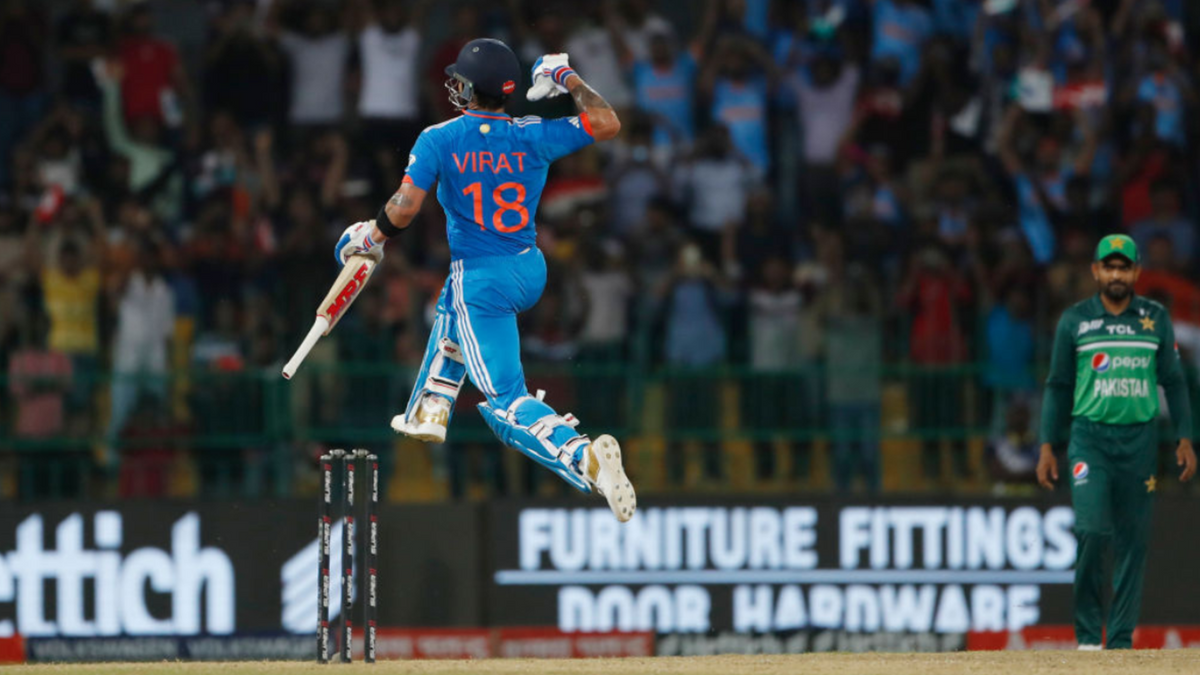
Virat Kohli oozed class as he brought up his 47th ODI century in the Asia Cup Super Fours match against Pakistan in Colombo. It was not the first time that he stamped his authority in India-Pakistan contests, writes Naman Agarwal.
Subscribe to the Wisden Cricket YouTube channel for post-match analysis, player interviews, and much more.
When Virat Kohli played his first international game against Pakistan in 2009, it was as a 20-year-old marketed as the next big thing in international cricket. A decade and a half later, the marketing surrounding India-Pakistan games revolves entirely around him, and for good reason.
Given the chequered political history between the two nations, India-Pakistan cricket matches bring out sentiments matched by few around the world. Performances in these games elevate you to demigod status. And if you do so consistently over the course of fourteen years, at the biggest of stages, often single-handedly, you become something more than a demigod. You become Virat Kohli.
From his epic 183 not out in Sachin Tendulkar’s swansong in the 2012 Asia Cup to his lone hand of 55 not out at the Eden Gardens in the 2016 T20 World Cup, from his divine 82 not out at the MCG in the 2022 T20 World Cup to his surgically precise 122 not out in Colombo in the 2023 Asia Cup, Kohli against Pakistan has been omnipresent.
From 25 international matches across the two white-ball formats against Pakistan, Kohli averages 63.88 – 13.2 percent more than his white-ball average in international cricket. He strike rate of 109 is 7.7 percent better. And he has three hundreds and seven fifties. Something about the pressure of expectations brings the best out of him.
[breakout id=”0″][/breakout]
India and Pakistan have not played a lot of cricket over the last decade and a half. Since Kohli’s first ODI against Pakistan in the 2009 Champions Trophy, they have faced 17 times in ODIs over 14 years. Kohli has featured in 15 of those games, more than any Indian. He has been the face of India-Pakistan contests.
It was only fitting, then, that he put on one of his trademark masterclasses in the Super Fours that Pakistan have become all too familiar with.
It is not often that the hallmark and the highlight of a white-ball hundred scored at a strike rate of nearly 130 would be the running between the wickets, but such was Kohli’s intensity and speed on the crease during his Asia Cup Super Fours knock that the cover drives and straight drives paled into background. Only 31 percent of the deliveries he faced were dot balls.
At one point, his partner, KL Rahul, returning from injury, would have had his heart in his mouth as he struggled to make his ground for a second run Kohli had called for. The bowler fumbled while collecting the throw at the stumps, and Rahul survived.
At another, Kohli called for an overthrow as a direct hit from the boundary deflected the ball from the bowler’s end towards the wicketkeeper. He almost ran with the ball from one end of the pitch to the other.
Not many others would have spotted that run, let alone take it. Kohli was in the zone. Possessed, almost, like he has often been against Pakistan.
While his overall numbers against Pakistan have been phenomenal, he has had a few failures as well. In fact, he has failed to reach double figures as many as seven times in 15 ODI innings, most notably in the 2017 Champions Trophy final. But he has more than covered up for that with several world-class knocks that will stand the test of time, including but not limited to the one in Colombo.
India may face Pakistan once more in the Asia Cup, in the final, before meeting them in the World Cup in India next month. It will not be a surprise if a few more masterpieces are added to the museum of antiques that is Kohli’s legacy against Pakistan by the end of the year.








